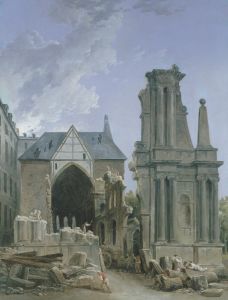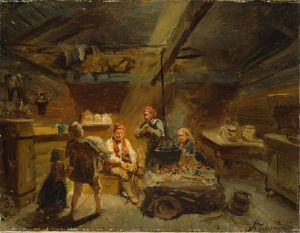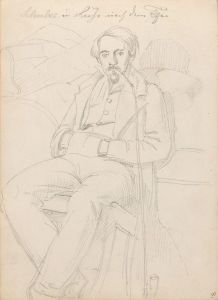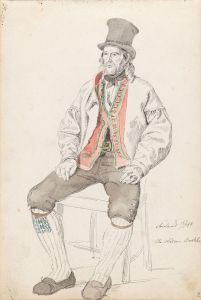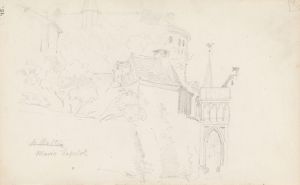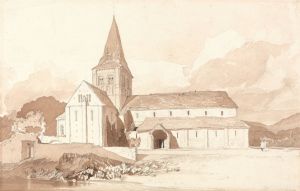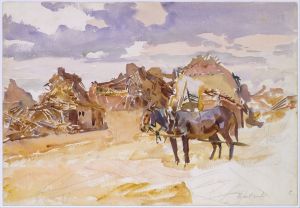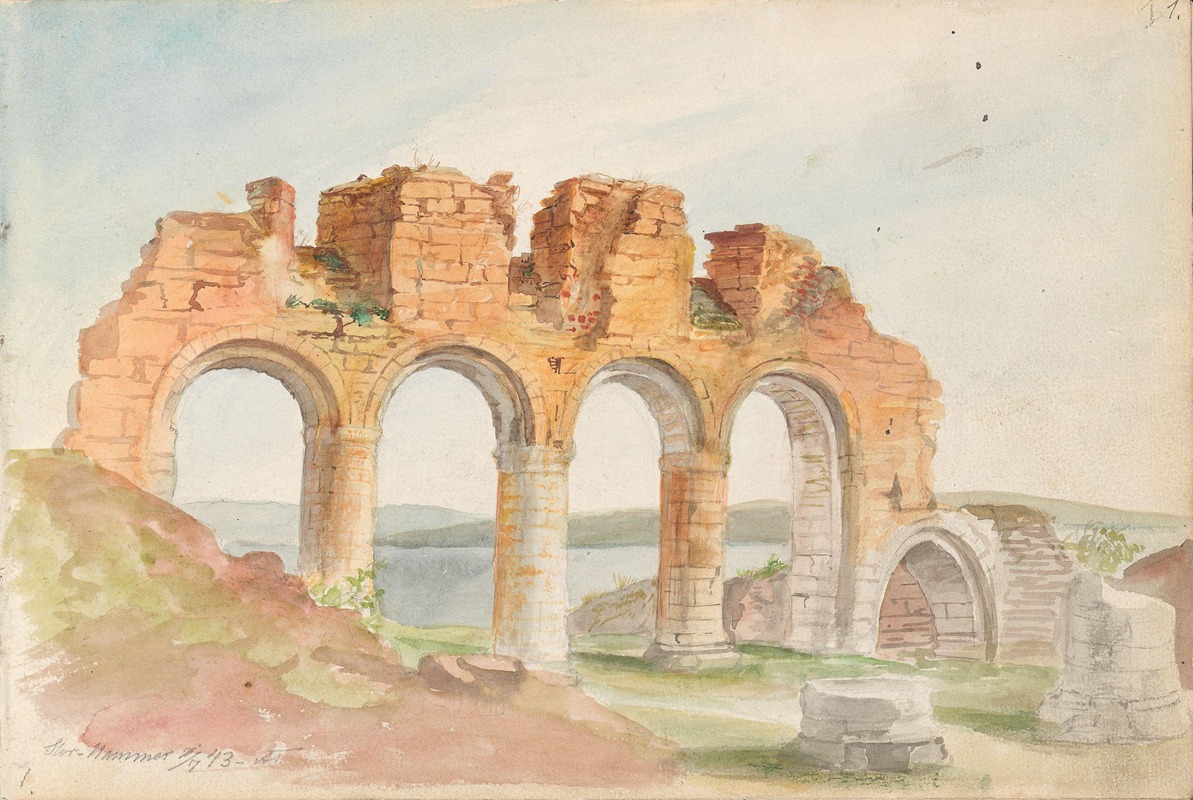
Domkirkeruinen, Hamar
A hand-painted replica of Adolph Tidemand’s masterpiece Domkirkeruinen, Hamar, meticulously crafted by professional artists to capture the true essence of the original. Each piece is created with museum-quality canvas and rare mineral pigments, carefully painted by experienced artists with delicate brushstrokes and rich, layered colors to perfectly recreate the texture of the original artwork. Unlike machine-printed reproductions, this hand-painted version brings the painting to life, infused with the artist’s emotions and skill in every stroke. Whether for personal collection or home decoration, it instantly elevates the artistic atmosphere of any space.
Adolph Tidemand's painting Domkirkeruinen, Hamar depicts the ruins of the medieval Hamar Cathedral, located in Hamar, Norway. Tidemand, a prominent Norwegian romantic painter, is best known for his works that capture Norwegian history, culture, and landscapes. This particular painting is part of his broader artistic focus on national heritage and historical themes.
The Hamar Cathedral, originally constructed in the 12th century, was a significant ecclesiastical structure during the Middle Ages. It served as the seat of the Bishop of Hamar and was an important religious and cultural center in the region. However, the cathedral fell into disrepair following the Reformation in the 16th century, when Norway transitioned from Catholicism to Lutheranism. The building was eventually abandoned and left to decay, becoming a ruin over time.
Tidemand's painting reflects the romantic fascination with historical ruins and their connection to national identity. The artwork portrays the cathedral ruins in a picturesque manner, emphasizing their historical significance and the passage of time. The composition likely includes elements such as the crumbling stone walls and the surrounding natural landscape, which were common features in Tidemand's romanticized depictions of historical sites.
Adolph Tidemand (1814–1876) was a central figure in Norwegian art during the 19th century. He studied at the Academy of Fine Arts in Copenhagen and later in Düsseldorf, Germany, where he became associated with the Düsseldorf School of painting. This artistic movement emphasized detailed, realistic depictions of historical and folkloric subjects, often with a romanticized tone. Tidemand's works, including Domkirkeruinen, Hamar, played a significant role in shaping Norwegian cultural identity during a period of growing national consciousness.
The painting is an example of Tidemand's ability to blend historical accuracy with artistic interpretation. By focusing on the ruins of the Hamar Cathedral, Tidemand not only documented an important historical site but also contributed to the broader 19th-century interest in preserving and celebrating Norway's medieval heritage. His works often evoke a sense of nostalgia and reverence for the past, resonating with contemporary audiences who were seeking to reconnect with their national roots.
While specific details about the creation date or current location of Domkirkeruinen, Hamar are not readily available, the painting remains an important part of Tidemand's oeuvre and a testament to his dedication to capturing Norway's historical and cultural legacy.





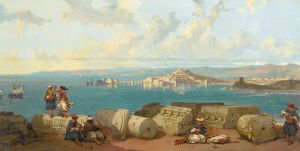
![Medinet Abou [Medinet Habu], Thebes. Dec. 5th, 1832.](/imgs/217510/s/david-roberts-medinet-abou-medinet-habu-thebes-dec-5th-1832-9c2109da.jpg)

